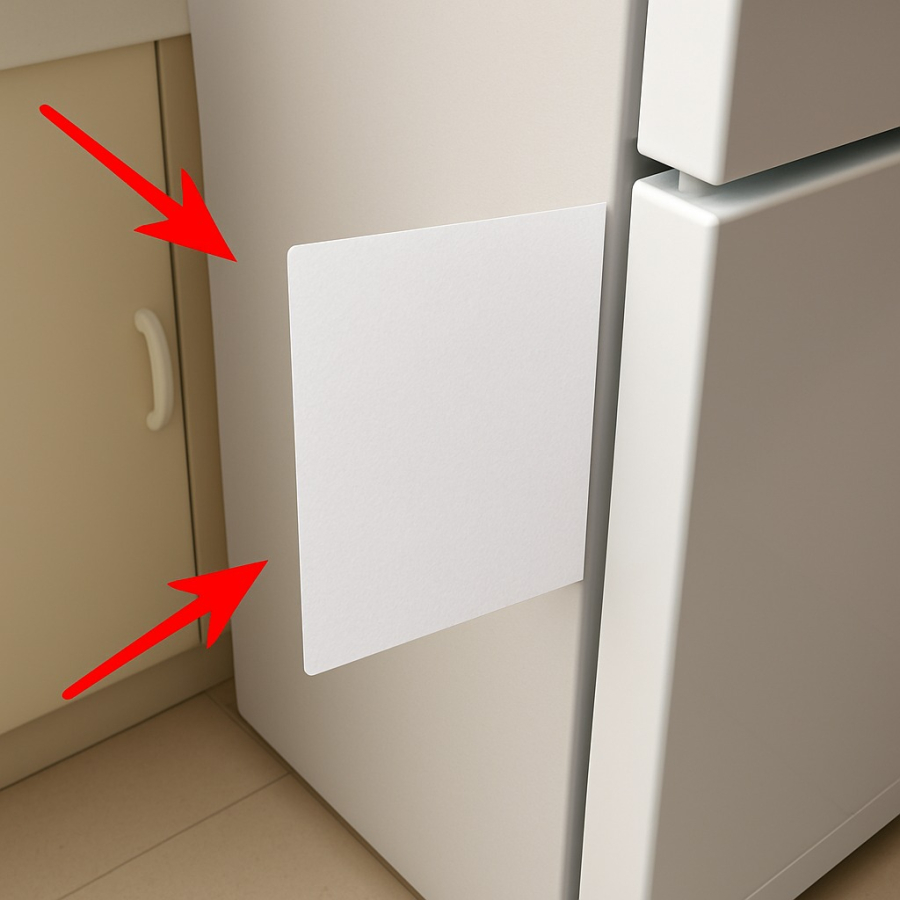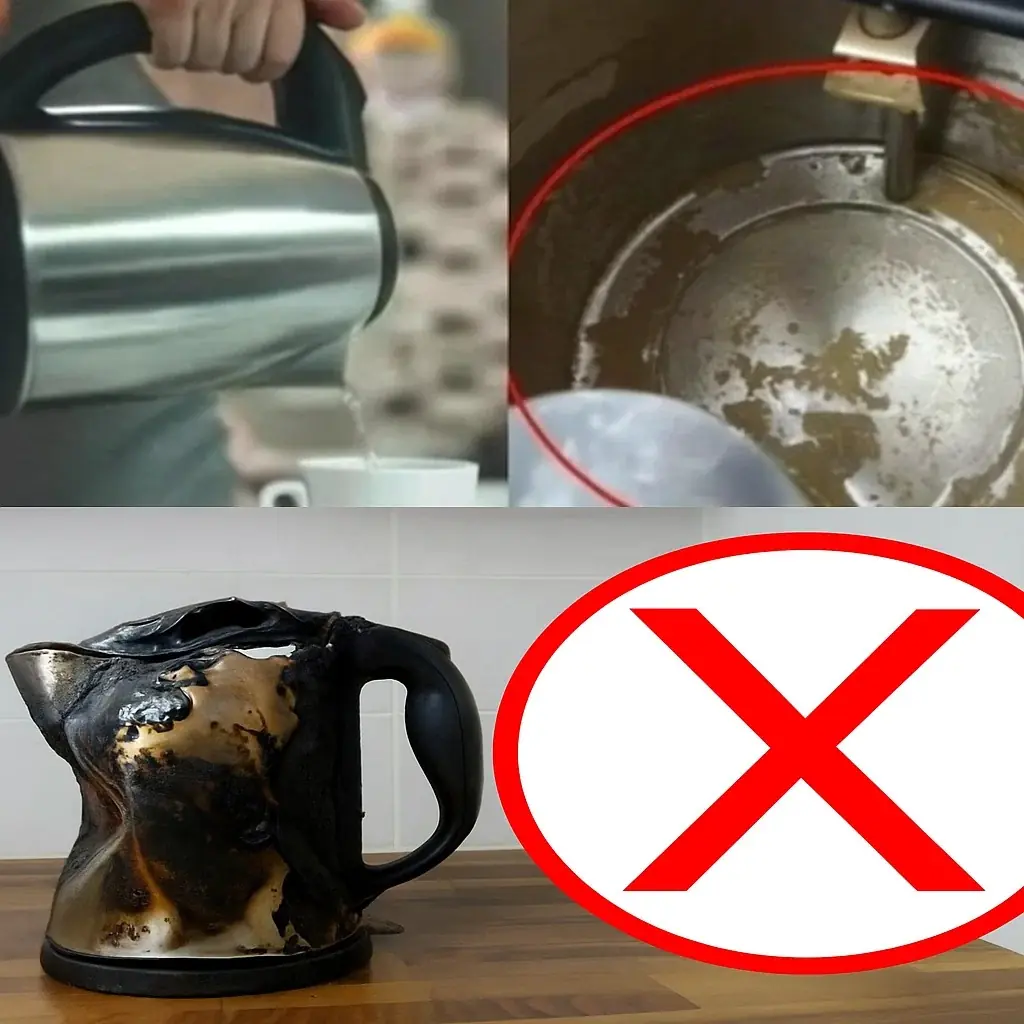
Clip a piece of paper in the refrigerator: Great use to save a lot of electricity

The Importance of the Rubber Seal on Your Refrigerator Door and How to Check for Heat Leakage
It might seem like a small detail that few people notice, but the rubber seal on your refrigerator door plays an incredibly important role in maintaining cooling efficiency and saving electricity. Recently, many consumers have been "passing on" a simple tip with just an A4 sheet of paper to immediately detect heat leakage – the culprit behind skyrocketing electricity bills.
A Small Sheet, Big Results
Refrigerators are appliances that run 24/7 in every household. However, not everyone knows that the door seal – the rubber lining around the edge of the door – if loose or not properly sealed, will cause cold air to escape, forcing the refrigerator to run continuously to maintain a stable temperature. The result is higher electricity costs, overloading the compressor, and shortening the lifespan of the appliance.
A small but highly effective tip to detect this issue is using a sheet of paper to test the door seal. This method has been recommended by refrigeration experts because it's simple, cost-free, and provides accurate results.
How to Check the Refrigerator Door Seal with Paper
To perform the test, you only need a regular white A4 sheet of paper (or printing paper):
Preparation: Fold the sheet of paper in half to increase its thickness, which will help you check the clamping force. The refrigerator should be in a normal closed state, not overloaded with food.
Testing: Open the refrigerator door, place the paper between the seal and the door frame so that one half is inside and the other half is outside. Then, gently close the door.
Pull the Paper: Slowly pull the paper out.
-
If the paper is held tightly, hard to pull, or tears: the seal is still working properly, ensuring airtightness.
-
If the paper slides out easily without resistance: the seal may be loose, cracked, or detached, allowing cold air to escape.
Repeat this process at various positions around the door – top, bottom, and both sides – to check the entire sealing system.
Why is the Door Seal Important?
According to energy-saving studies, a refrigerator with a tight seal can consume 15-20% less electricity than one with a loose seal. With average monthly electricity costs for refrigerators ranging from 300,000 to 500,000 VND, maintaining the door seal in good condition can help save from a few hundred thousand to several million VND annually – not to mention repair costs if the compressor fails due to overload.
What to Do If You Find the Seal Is Loose
If the paper test shows that the seal no longer ensures airtightness, you can fix it temporarily at home before calling a professional:
-
Clean the Seal: Dirt, oil, or food particles that have built up over time can cause the seal to lose its grip. Use a soft cloth dipped in warm water with a bit of mild soap to clean it, then dry it thoroughly with a dry cloth.
-
Restore the Seal's Shape: If the seal has slightly deformed, you can use a hair dryer on a medium heat setting and blow it evenly for 2-3 minutes to soften the rubber and restore its elasticity. Close the door and test again with the paper.
-
Replace the Seal if Necessary: If the seal is torn, peeling, or hardened, you should replace it. Replacement costs range from 200,000 – 600,000 VND depending on the type of refrigerator, which is much cheaper than having to repair or replace the entire refrigerator.
Additional Tips to Optimize Refrigerator Performance
In addition to regularly checking the door seal, users can apply some simple tips to enhance refrigerator efficiency and save electricity:
-
Set the Right Temperature: The ideal temperature for the fridge is 2 – 5°C, and -18°C for the freezer. Don't set the temperature lower than necessary, as it wastes electricity and dries out food.
-
Don't Overstuff the Fridge: Leave some space so the cold air can circulate evenly throughout the fridge.
-
Don't Leave the Door Open Too Long: Each time you open the door, cold air escapes. Close the door as soon as you finish taking out food.
-
Clean the Condenser Coils Regularly: The condenser coils on the back or bottom of the fridge, if dusty, will reduce cooling efficiency, consuming more electricity. Clean at least twice a year.
-
Seal Food Properly: Use covered containers, zip bags, or plastic wrap to prevent moisture from escaping into the fridge.
The refrigerator door seal is not a part that easily breaks, but it is often neglected during use. By checking it every 3 – 6 months with just a piece of paper, you can quickly detect issues and proactively fix them, avoiding "unexpected high electricity bills."
News in the same category


The effect of stewed chicken feet with black beans is as good as ginseng

Mosquitoes smell these 4 smells, 99% will turn around and run away, natural way to kill mosquitoes that many people don't know

Put ginger next to your pillow when sleeping: A simple secret for good health and sleep

It turns out that mosquitoes are most afraid of "it". Take this and stick it in a lemon and leave it in the corner of the house. The mosquitoes will go away and never come back.

6 types of fruit that help 'cleanse' the uterus, women in their 40s will see the difference immediately when they eat them

Chia seeds are as good as a 'miracle drug' but 5 groups of people need to be especially careful when using them to avoid bringing disaster upon themselves

When cleaning the house, add this to the water

When filling up with gas, don't be foolish to say full tank or 50 thousand

3 ways to prevent snakes from crawling into the house, everyone needs to know to protect their family

Here are 3 simple ways to keep your home free of mice.

4 Types of Electric Kettles That Could Be Harming Your Health – Check Yours Before It’s Too Late
Electric kettles are found in nearly every modern home, making it quick and easy to boil water for tea, coffee, or instant meals. But shocking warnings from health experts reveal that some kettles may release dangerous substances into the water you drink

Turn Back the Clock: The Cheap Sour Starfruit & Potato Remedy That Restores Black Hair Naturally
Struggling with premature gray hair in your 20s or already noticing streaks of silver in your 30s and 40s? Don’t panic. While gray strands can feel like a dreaded sign of aging, nature offers surprising, inexpensive solutions that can help you regain yo

Put a Bowl of Salt in the Fridge: The Genius Trick I Regret Not Knowing for 30 Years
A single bowl of salt might seem insignificant, but its impact on your fridge — and your household — is anything but small.

3 Dangerous Mistakes People Make With Plastic Wrap—And How They Could Secretly Harm Your Health
Plastic wrap is undeniably convenient, but it must be used correctly. Missteps like reusing, heating, or buying low-quality products can gradually harm your body.

How to cook perilla leaf water to cool the liver and brighten skin every day

Don't soak frozen meat in water. Listen to the chef's instructions on how to defrost it in 5 minutes and the meat will still be delicious.

Putting Meat Straight into the Freezer Is a Mistake: Butcher Shares Tips to Keep Meat Fresh for ‘a Whole Year’ Without Spoiling

Mixing Beer with Sugar or Laundry Detergent: A Brilliant Solution for a Common Household Problem You Didn’t Know About
News Post

Universe Shaken: Rare Triple Black Hole Merger Sends Ripples Through Space-Time

The Sun Isn’t Yellow—It’s Pure White

The Sun’s Power: Earth Lives on Just 0.000002%

iPhone users issue warning on what to do if you get the 'caution' icon on your device

PlayStation 6 leak suggests release date could be much sooner than expected

Rolling Stone sues Google over AI summaries in landmark lawsuit

Tips to clean greasy, yellow pot lids without chemicals: Simple, effective, and time-saving

The effect of stewed chicken feet with black beans is as good as ginseng

Mosquitoes smell these 4 smells, 99% will turn around and run away, natural way to kill mosquitoes that many people don't know

Put ginger next to your pillow when sleeping: A simple secret for good health and sleep

It turns out that mosquitoes are most afraid of "it". Take this and stick it in a lemon and leave it in the corner of the house. The mosquitoes will go away and never come back.

Things People Do That Put Themselves Closer to a Stroke

6 types of fruit that help 'cleanse' the uterus, women in their 40s will see the difference immediately when they eat them

The Harmful Effects of Squatting Over a Toilet 🚽

Rare Body Features That Show Just How Incredible the Human Body Is

Chia seeds are as good as a 'miracle drug' but 5 groups of people need to be especially careful when using them to avoid bringing disaster upon themselves

Proven Health Benefits of Dates

Man Suffers a Stroke from Bathing After a Meal: 3 Things You Should Never Do
